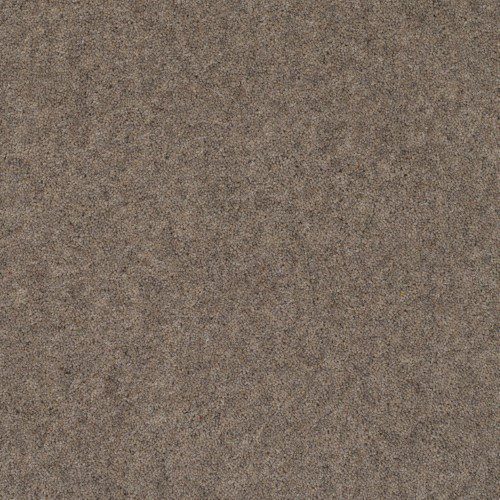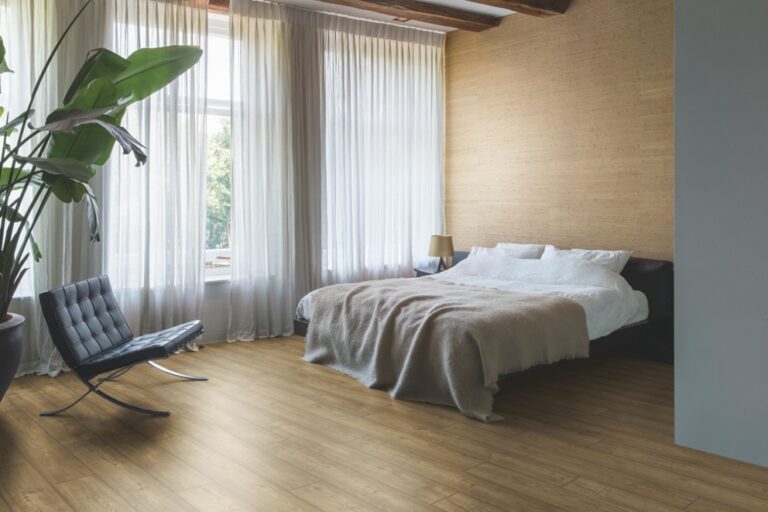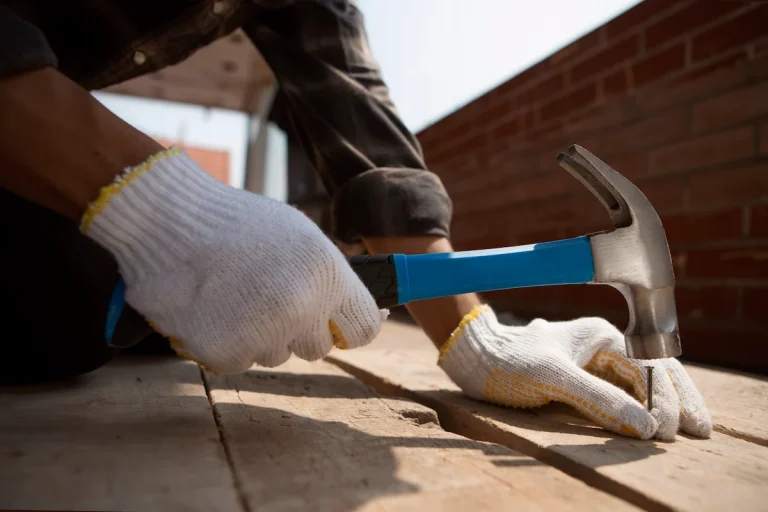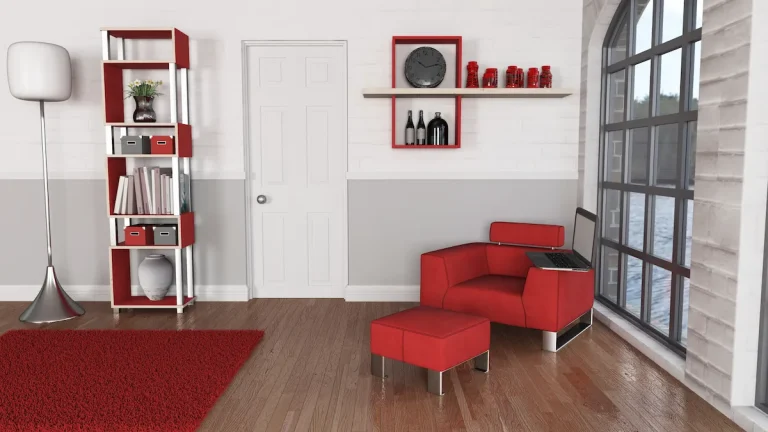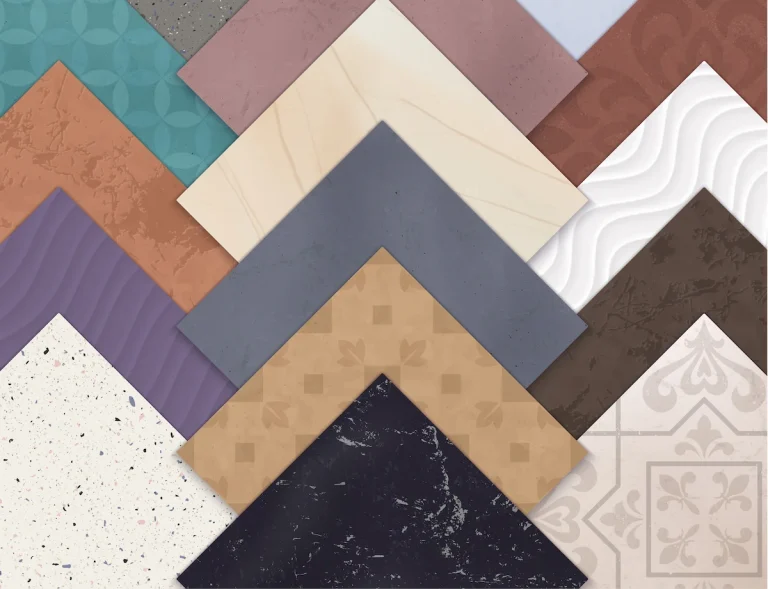Wood flooring for living room emerges as a popular choice for numerous homeowners. It provides both durability and aesthetic appeal, integrating seamlessly into a variety of design styles and accommodating diverse lifestyles. With options ranging from hardwood to engineered and laminate flooring, there exists a wood flooring type to meet every preference and budgetary requirement, offering a unique selection for diverse needs.
This article aims to examine the benefits of wood flooring, offer design inspiration, and present essential maintenance tips to assist in making an informed decision for your living space.
Why Choose Wood Flooring for Your Living Room?
Selecting wooden flooring for the living room is a commendable choice for numerous reasons. It contributes a classic element to home design while providing a timeless beauty that enhances the overall ambience of the space.
Wooden floors impart natural warmth, improve aesthetic appeal, and offer effective insulation against temperature fluctuations. Additionally, they are relatively easy to clean and maintain.
The diverse variety of wooden flooring options available also grants homeowners the flexibility to align with various décor styles and interior preferences, making it a favoured choice for those seeking to create stylish and inviting environments in their homes, whether through traditional decor or a modern approach.
1. Durability
One of the key attributes of wood flooring is its exceptional durability, making it an excellent investment for high-traffic living areas. This characteristic ensures that these warm spaces not only maintain their aesthetic appeal but also endure the daily wear and tear associated with family activities and entertaining guests.
When evaluating wood flooring, both hardwood and engineered wood options present distinct advantages regarding longevity and stability. Hardwood floors, constructed from solid wood, are renowned for their resilience and can be refinished multiple times, thereby extending their usability while preserving their original lustre. In contrast, engineered wood has gained popularity due to its layered composition, which renders it more resistant to moisture and fluctuations in temperature.
To maintain wood flooring effectively, the following practices are essential:
- Regular sweeping and vacuuming to eliminate dirt and debris.
- Utilising a damp mop with a pH-balanced cleaner to preserve the floor’s sheen.
- Applying a protective finish every few years to significantly enhance longevity.
By adhering to these maintenance guidelines and cleaning methods, individuals can ensure their wood floors remain visually appealing and that their investment endures over time.
2. Aesthetics and Design Possibilities
Wood flooring is renowned for its timeless beauty and offers a diverse array of styles, including unique pattern options and designs, that can complement any décor.
This versatility is particularly evident in its contribution to the aesthetic appeal of living room floors. With a variety of wood types available, such as oak, maple, and walnut, individuals can select options that align seamlessly with their personal tastes and the desired ambience, offering a beautiful elegance that transforms any space.
- Oak is celebrated for its durability and prominent grain, making it an excellent choice for traditional spaces.
- Maple features a lighter tone and smooth surface, lending a contemporary flair to modern environments.
- Walnut provides rich, dark hues, ideal for creating an atmosphere of sophisticated warmth.
The selection of finishes can significantly enhance the overall appearance, with options ranging from matte to glossy, each affecting the interaction of light with the surface. Patterns such as herringbone and parquet styles add intricate visual texture, ensuring that every living room is uniquely inviting and stylish.
This flooring option represents an excellent investment for those seeking to elevate their home’s overall aesthetic.
3. Easy Maintenance
One of the notable advantages of wooden flooring is its ease of maintenance, making it a hygienic option for living rooms, particularly for allergy sufferers. This durable flooring not only enhances the natural warmth and beautiful elegance of a home but also contributes to a healthier environment by minimising the accumulation of dust and allergens commonly found in carpets.
To preserve the integrity and appearance of wooden floors, regular cleaning routines are essential.
- Dusting or vacuuming at least once a week can prevent dirt build-up and help control allergens, offering an easy to clean solution.
- Using a damp mop with an appropriate wooden floor cleaner effectively removes sticky residues without compromising the finish.
- It is advisable to avoid harsh chemicals and excessively wet mops to ensure the wood remains in optimal condition.
By implementing these straightforward cleaning methods, individuals can maintain the aesthetic appeal of their wooden floors while promoting a healthier living space.
4. Versatility
Wood flooring provides remarkable versatility, offering homeowners a broad range of design options that can transform any living room into a comfortable and aesthetically pleasing environment.
With a variety of styles and finishes available, wood flooring accommodates diverse aesthetic preferences, ensuring that each interior reflects the unique taste of its owner, enhanced by decorative rugs and area rugs for added comfort.
For those seeking to introduce an element of sophistication, the incorporation of Herringbone pattern can create a timeless visual impact that enhances any space, allowing artistic licence in home design. Additionally, combining wood flooring with decorative rugs can further enhance comfort while adding a personalised touch.
- Plank sizes may vary, with options ranging from wide boards that effectively open up smaller spaces to narrow planks that convey a traditional ambience.
- The selection of materials is also diverse, including choices such as rich oak and rustic reclaimed wood, catering to both modern and classic sensibilities, and reflecting the quality wood craftsmanship of flooring collections.
In conclusion, the appropriate wood flooring can seamlessly adapt to any interior preference, ensuring that every living room becomes a sanctuary of style and comfort, providing a classic choice for stylish decor.
Types of Wood Flooring for Living Room
When choosing wooden flooring for a sitting room, it is important to consider the various types available, as each offers distinct benefits and aesthetic qualities that can accommodate specific needs and preferences, providing unique design possibilities with timeless beauty.
a. Hardwood
Hardwood floors exemplify timeless beauty and durability, positioning them as a premier choice for homeowners seeking to enhance the aesthetic of their sitting rooms.
Among the various types of hardwood, oak, maple, and cherry are particularly notable for their distinctive grain patterns and colours, offering a wide range of options that can complement nearly any décor style, embodying timeless flooring qualities. Homeowners often favour oak for its exceptional resistance to scratches and dents, making it an ideal choice for families with children or pets, and ensuring comfortable underfoot experiences.
Conversely, maple, recognised for its light tones and subtle grain, can create an illusion of spaciousness and airiness, aligning well with modern design aesthetics. Cherry, with its rich, warm hue that deepens over time, contributes a level of sophistication to traditional interiors.
- Quality and Longevity: Hardwood is esteemed not only for its aesthetic appeal but also for its unparalleled quality. When properly maintained, hardwood can endure for decades, often surpassing the lifespan of other flooring options.
- Adaptability: The versatility of these woods allows them to integrate seamlessly with a variety of styles, from rustic to contemporary, thereby enhancing the overall ambience of any room.
Therefore, selecting the appropriate type of hardwood can significantly elevate both the visual appeal and longevity of a space, making it a prudent investment for any home, even as an expensive investment.
b. Engineered Wood
Engineered wood presents an innovative alternative to traditional hardwood flooring, effectively combining aesthetic appeal with practicality, particularly for individuals seeking a cost-effective solution. It offers excellent sound insulation and good insulation properties, ensuring a comfortable environment.
This versatile flooring option consists of multiple layers of real wood veneer bonded to high-density fibreboard, which significantly enhances its strength and durability. By opting for engineered wood, homeowners can achieve the elegant appearance of hardwood while benefiting from excellent thermal insulation properties that markedly reduce heat loss. This makes it an ideal choice for a range of environments, from comfortable residences to high-traffic commercial settings.
Key advantages include:
- Effective insulation that maintains comfortable indoor temperatures throughout the year.
- A replication of the rich textures and colours associated with solid hardwood.
- Compatibility with installations over concrete and heated floors.
In summary, engineered wood emerges as a practical and stylish choice for those aiming to enhance their living spaces without compromising quality, offering wider planks that suit various design possibilities and interior preferences.

See product: Elka 12.5mm Real Wood Fawn Oak
c. Laminate
Laminate flooring offers a cost-effective solution for homeowners seeking the aesthetic of wood without the significant expense associated with hardwood, parquet flooring, or engineered wood options.
This innovative flooring alternative not only replicates the visual appeal of genuine wood but also features a diverse array of styles and finishes, enabling homeowners to find the ideal match for their interior design preferences. Its ease of cleaning renders laminate an appealing choice for busy families and pet owners, as it effectively resists stains and spills. Homeowners can select from an extensive range of designs, including classic oak and contemporary grey tones, ensuring a cohesive integration with existing decor.
Functionally, laminate flooring integrates seamlessly within various flooring collections, such as Segno flooring and the Grace collections, allowing for a wide range of applications across residential environments. Key advantages include:
- Durability: High resistance to scratches and impact, ideal for active households and reducing concerns related to allergies.
- Affordability: A budget-friendly alternative to traditional wood.
- Low Maintenance: Simple cleaning routines are required.
These benefits position laminate flooring as a practical and stylish choice for any home.

See product: Elka 8mm V-Groove Driftwood Oak
Factors to Consider When Choosing Wood Flooring for Living Room
Selecting the appropriate wood flooring for a living room necessitates careful consideration of several factors. These include style and design preferences, the dimensions and layout of the room, budget constraints, and the lifestyle of the occupants.
1. Style and Design
Considering style and design is essential when selecting wood flooring, as it should harmonise with the overall decor and reflect the homeowner’s unique design preferences.
Homeowners frequently discover that the choice of wood types and finishes provides an effective means of expressing their individual tastes. For example, rustic styles may benefit from distressed oak or reclaimed wood, which evoke a sense of warmth and history. Conversely, sleek and modern aesthetics typically favour smooth, light maple or the striking presence of dark walnut, contributing to a more refined appearance.
This versatility allows for a broad range of design choices, utilising wood not merely as a flooring material but as a dynamic element that conveys a narrative.
- Selecting a matte finish can impart a touch of natural elegance, making it well-suited for minimalist environments.
- Glossy finishes, conversely, are effective in contemporary settings, highlighting the intricate grains of the wood.
- Various stains can further enhance the inherent beauty of the wood, creating a customised look that integrates seamlessly with the overall decor.
Ultimately, the creative freedom afforded to homeowners ensures that nearly any wood flooring can be tailored to align with specific decorative visions, thus enabling limitless possibilities in home design.
2. Room Size and Layout
The dimensions and layout of your living room are crucial factors in determining the most effective and visually appealing type of wood flooring. A thoughtfully selected floor can significantly enhance both aesthetics and comfort.
When considering the application of wider planks for flooring, it is important to recognise that their visual impact is particularly pronounced in larger spaces. Such planks can create a cohesive appearance that draws the eye throughout the room, making it feel more expansive and inviting. Additionally, wider boards provide enhanced comfort underfoot, offering increased surface area for added stability while walking or standing.
To optimise your flooring choice based on the dimensions of your living area, consider the following recommendations:
- Select wider planks (6 inches and above) for spacious rooms, as they help unify the space.
- Choose lighter colours to reflect light, thereby enhancing the illusion of increased space.
- Opt for finishes that are soft underfoot to ensure comfort and warmth within your living room.
Ultimately, the appropriate flooring selection can not only elevate the design of a large room but also significantly contribute to a cosy and welcome atmosphere.
3. Budget
Budget considerations are critical when selecting wood flooring, as some options represent a significant financial investment, while others, such as laminate flooring or alternatives from the Tarkoflex II. collection, offer a more cost-effective solution.
When determining the appropriate flooring material, it is essential to evaluate not only the initial costs but also the long-term value associated with each choice. For instance, hardwood flooring typically incurs a higher upfront price due to its durability and aesthetic appeal, positioning it as an excellent choice for homeowners aiming for a timeless appearance.
On the other hand, engineered wood presents a compromise, featuring a natural wood veneer over plywood, which often falls between hardwood and laminate in terms of cost while maintaining a robust construction. Laminated flooring, being the least expensive among the three, imitates the appearance of genuine wood at a fraction of the cost; however, it may necessitate more frequent replacements, which could impact its overall long-term value.
When evaluating these options, it is important to consider not only the price but also factors such as lifespan, maintenance requirements, and potential resale value. This comprehensive assessment will enable individuals to make informed decisions that align with their financial circumstances and lifestyle preferences.
4. Lifestyle and Maintenance
The choice of wooden flooring should be significantly influenced by individual lifestyle and maintenance preferences, as certain options necessitate more upkeep than others. It is essential to understand the dynamics of each household to make a well-informed decision that accommodates both aesthetic preferences and practical requirements.
For example, households with children and pets typically experience higher levels of activity, which may lead to increased wear and tear on flooring materials. In these situations, selecting a durable wood type, such as oak or maple, can be beneficial, as these materials are generally more resistant to scratches and dents compared to softer woods.
Maintenance requirements vary considerably among different wood options:
- Hardwoods: Regular sweeping and occasional refinishing enhance their durability.
- Softwoods: Require more frequent attention due to their increased susceptibility to wear.
- Engineered woods: Provide a balance of aesthetic appeal and practicality, with reduced maintenance needs.
Ultimately, aligning the choice of flooring with one’s lifestyle not only ensures aesthetic satisfaction but also promotes longevity and ease of maintenance, establishing an ideal foundation for active households.
Wood Flooring Ideas for a Stylish Living Room
Transforming a living room with wooden flooring can enhance both the aesthetic appeal and functionality of the space. It provides a range of options to create a distinctive look that complements the overall décor.
a. Light or Dark Wood
The selection of light or dark wood flooring can significantly impact the aesthetics of a living room and enhance various décor styles.
When determining the appropriate wood tone, it is essential to consider how the natural hues interact with other design elements within the space. Light wood flooring typically evokes a sense of airiness and openness, making it an excellent choice for modern and Scandinavian themes, where minimalism is a key characteristic.
Conversely, dark wood flooring often imparts a sense of richness and warmth, rendering it a preferred option for traditional or rustic décor, where bold and classic elements are prominent.
- In a light wood setting, the use of soft fabrics and pastel colours fosters a serene atmosphere.
- Conversely, dark wood harmonises beautifully with deep jewel tones and luxurious textures, creating a dramatic effect.
Ultimately, the choice between light and dark wood flooring is pivotal in shaping the emotional tone of the living room, influencing how individuals perceive and experience the space.
b. Wide or Narrow Planks
The choice between wide and narrow planks significantly affects the visual impact and comfort of living room flooring.
Selecting the appropriate plank size can transform not only the aesthetic of a space but also the experience of movement within it. For example, wider planks tend to create a more open and spacious appearance, suggesting a seamless flow, whereas narrower planks can evoke a sense of cosiness and intimacy within the room.
- Wider planks are favoured in modern design, contributing to a contemporary ambience.
- In contrast, narrower planks often complement more traditional settings, enhancing the classic warmth.
It is essential to consider how the flooring will interact with natural light; wider planks can reflect light differently, dynamically altering the atmosphere throughout the day. Ultimately, the selection of plank size is a critical design decision that influences both the contextual aesthetic and overall comfort of the space.
c. Herringbone Pattern or Chevron Pattern
Incorporating distinctive patterns such as the herringbone pattern or chevron can significantly enhance the aesthetic appeal of wood flooring, positioning it as a focal point within the living room.
These unique arrangements not only impart a sense of sophistication but also contribute to a visual narrative that cohesively integrates the entire room. The intricate geometry of these floor patterns can elevate the overall aesthetic, fostering a sense of movement and depth.
To maximise the impact of these unique designs, it is essential to consider the size of the room and the existing decorative elements. Here are some guidelines for selecting the appropriate pattern:
- Room Size: Larger patterns are advisable in spacious areas to prevent overwhelming the space, while smaller patterns can add an inviting charm to more intimate settings.
- Style Cohesion: It is crucial to ensure that the selected pattern aligns with the overall theme of the room—modern spaces may benefit from sharper, angular designs, whereas traditional settings might favour softer, flowing patterns.
- Colour Coordination: Choosing colours that harmonise with your furnishings and wall colours will facilitate a seamless and cohesive look.
By thoughtfully selecting the appropriate pattern, one can transform wood flooring into a striking centrepiece that enhances the visual appeal of the living room. Exploring options from Segno flooring, Grace collections, Heritage collections, Prestige collections, Pure collections, and Shade collections can provide a diverse range of styles to suit any decor.
d. Mixed Wood, Ceramic Tile, and Stone Flooring
The combination of mixed wood, ceramic tile, and stone flooring represents an innovative approach that enhances the character of a living room while maximising design possibilities.
When assessing the aesthetic appeal of mixed materials, it is crucial to acknowledge that blending different textures can create visual interest and elevate the overall ambience of the space. Homeowners are encouraged to experiment with various shapes and finishes to achieve a harmonious appearance.
- Strategic placement of these materials can effectively delineate areas within a room, guiding the eye and fostering a natural flow.
- For instance, the use of tile in high-traffic areas provides durability, while the selection of warm wood tones in cosy corners contributes to a sense of comfort.
Additionally, incorporating area rugs can serve to unify these distinct elements, softening transitions and adding warmth. The appropriate rug can help to integrate various textures, establishing a cohesive design narrative that reflects both style and functionality, ultimately transforming the living room into an inviting and captivating space.
Tips for Maintaining Hardwood Floors in Your Living Room
Proper maintenance is essential for preserving the aesthetic appeal and longevity of wooden flooring in the living room. This attention to care ensures that the flooring remains a stylish and durable feature of the home.
1. Regular Cleaning and Dusting of Hardwood Floors
Regular cleaning and dusting are essential steps in preserving the appearance and integrity of hardwood floors.
Adopting a systematic approach to maintenance not only ensures the longevity of the flooring but also enhances its natural beauty. By adhering to a routine that includes light sweeping or vacuuming several times a week, one can effectively remove dust and debris that may lead to scratches and dullness. Tarkoflex II. is recommended for maintaining hardwood floors efficiently.
- Utilising a soft-bristle broom or a vacuum specifically designed for wooden surfaces can significantly mitigate wear compared to conventional cleaning methods.
- It is advisable to invest in a high-quality hardwood floor cleaner that features an easy-to-clean formula, as this will not only ensure effectiveness but also protect the floor’s finish.
- A damp mop technique can be employed periodically, allowing for a more thorough cleaning without excessively saturating the wood.
Establishing these habits not only fosters a welcome ambiance but also contributes to overall maintenance practices aimed at prolonging the life of these exquisite surfaces.
2. Avoiding Water and Moisture on Hardwood Floors
To prolong the lifespan of hardwood floors, it is essential to avoid water and excessive moisture, as these factors can compromise the material’s durability.
Excessive dampness can result in warping, swelling, and mould growth, which ultimately detracts from both the aesthetic appeal and structural integrity of the flooring. Proper moisture management is not merely a maintenance task; it is a critical strategy for preserving the longevity of any wooden surface.
Homeowners should consider the following solutions to effectively mitigate moisture in living spaces:
- Regularly monitoring humidity levels with a hygrometer to track indoor moisture.
- Employing dehumidifiers in areas susceptible to dampness to significantly control excess moisture.
- Ensuring adequate ventilation by utilising extractor fans in kitchens and bathrooms to maintain a balanced humidity level.
- Applying high-quality finishes to seal wooden floors, providing a protective barrier against spills and moisture.
By incorporating these practices, homeowners can enhance the durability of their wooden flooring while simplifying maintenance, thereby allowing them to enjoy the aesthetic appeal and warmth of their living spaces for years to come.
3. Using Protective Mats and Furniture Pads on Hardwood Floors
Utilising protective mats and furniture pads is a highly effective strategy for preserving the condition of wooden flooring and preventing scratches or dents.
Along with safeguarding against physical damage, these essential items play a crucial role in maintaining the aesthetic appeal of any space. When positioned strategically, particularly in high-traffic areas, they significantly reduce the wear and tear that can diminish the lustre of the flooring.
- The use of protective mats can substantially decrease the frequency of refinishing required, thereby saving both time and money over the long term.
- They can absorb impact, enhancing safety within the environment, particularly for children and pets.
- Selecting durable mats that complement existing décor not only enhances the overall style but also creates a functional barrier against dirt and moisture, further promoting the longevity of the flooring.
Implementing these protective measures is not solely focused on preservation; it is about extending the life of the flooring and maintaining its inherent beauty. Considering decor styles while selecting protective elements can further enhance the room’s aesthetic.
When it comes to selecting and installing your ideal wood flooring for living room, trust TEKA Flooring to bring your vision to life. With a wide range of premium wood flooring options and expert fitting services, TEKA Flooring ensures superior quality, precision, and a flawless finish.
Our skilled professionals are dedicated to transforming your living room into an elegant and inviting space. Contact TEKA Flooring today to explore our collections and experience the perfect blend of craftsmanship and style for your home.
Read also:



























